We delivered the code. They paid us the buck. Continue reading
IBM’s introduction of the System/23 Datamaster in June of 1971 was a tremendous opportunity for TSI. In fact, if the announcement had been a month later, I probably would have given up on TSI and looked for a job.
The Datamaster was one of the very few systems in the early eighties that offered small businesses of all shapes the opportunity to automate their operations. There were competitive hardware systems, of course. Some of them offered more processing bang for the buck, but none of them had the three magic letters I-B-M on the hardware. IBM had a well deserved reputation of delivering high-qualiity system with unmatched service. “No one ever got fired for recommending IBM,” was a popular saying.
What we did not realize until we got our hands on it was that the Datamaster was extremely easy to program. Of all the systems that we worked with, I enjoyed working on a Datamaster the most. We delivered an enormous amount of code to meet incredibly diverse requirements in a very short period of time.
We depended on IBM for most of our new clients. The exceptions were Harstans Jewelers (described here) and advertising agencies (described here and here). I am uncertain of the order in which we acquired the new clients. The order in which I have listed them here may not correspond to the order in which we did the projects.
In most cases we took delivery on their systems in our office in Rockville and then carted them to the user’s location when the systems (or at least the most important modules) were ready. Once this started we always had at least one system in the office until the time that we bought one for ourselves.
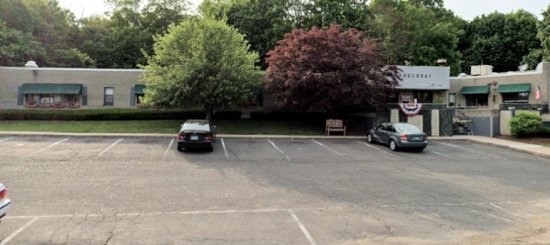
One of the most memorable clients was Ledgecrest Convalescent Hospital, a nursing home in Kensington, CT. The proprietor was Paul Prior1, one of the most interesting people whom I have ever met and one of the few clients whom I got to know pretty well.
When Sue and I first met Paul I was quite intrigued by his business. Paul’s goals were not much different from those of any other small business. He wanted to bring his company into the twentieth century. Most of the applications that interested him were fairly standard,—patient billing and accounts receivable, accounts payable, and general ledger.
The last was his top priority because a high percentage of his receipts came from reimbursement from the government. The amount that the state reimbursed the business depended on his keeping a close eye on expenses. A mistake could cost thousands. So, the objective was to produce a system that allowed Paul to keep Ledgecrest’s expenses within state guidelines year after year. Anything over the legally prescribed “caps” would be disallowed.
The important thing was for him to learn where he stood while he still had time to do something about it. He needed to project his spending fairly accurately beginning in the middle of the year or even earlier. This sounded to me like something that would be valuable to all of the nursing homes in Connecticut. I had high hopes of marketing it to the dozens of nursing homes in the state, and I did. That effort is detailed here.
Paul also ran a second company called Priority Services. It provided Meals on Wheels to aged and disabled people.
After we won the contract and delivered the first part of the system, Paul told me how much he enjoyed working with the system. For reasons that I did not yet understand he had done all of the initial data entry himself. As usual he was drinking coffee from his dirty cup. He never washed it because, he said that it protected him from a weak cup. That was the day that he identified for me the feature in our systems (I forget exactly what impressed him) that convinced him to hire us. I chuckled when I informed him that our systems did not actually have that feature. He must have mixed us up with someone else.
Paul told me that he had been drafted in the fifties and took part in the Korean War. I don’t use the word “fought” because he told me that as soon as he got close to combat he “went over the hill”, was apprehended by MPs, and then spent some time in the brig.
When he got his discharge (I didn’t press him for details) and came home, he discovered that his older siblings had taken control of the family business that had been founded by their parents. According to Paul, everything was a mess. Bills were going unpaid, and the standards of patient care had dropped precipitously. Meanwhile his brothers and sisters were living high on the hog.
Paul somehow chased them out and took over the management and eventually the ownership of the business. He went to each creditor and arranged a plan for paying all the bills. Eventually he reestablished the reputation of the institution. I was very impressed by this. Nobody had ever related for the origin story of his business.
While I worked with Paul on getting reports from the G/L system to provide the information needed to maximize his income from the state, I got to meet the other three people in the office, all of whom were female. The first was named Dorie. She served as secretary and reception. She also paid all the bills. I don’t remember the second lady’s name. She was, among other things, in charge of Priority Services. The last was Paul’s daughter, Kathy, who helped out part time. I think that she was engaged to be married.
I don’t remember exactly what the system that we designed for Priority Services did. I think that they recorded who was to receive meals on specific days, and the computer printed delivery routes. I seem to remember that it also did billing. One day Paul asked the lady who ran this system to get me a cup of coffee. She asked me how I liked my coffee. I requested just a little bit of sugar and no cream.
The beverage that she brought me back was so sweet that I could not drink it. She explained that she could not find any sugar, and so she substituted a packet of Sweet’n Low. That didn’t seem like enough to her, and so she poured in a second envelope. From that day forward I drank my coffee black. I eventually learned to appreciate the bitterness.
The last system that we got working was accounts payable. I spent one session with Dorie in which I tried to learn how she did things. I asked her how many bills they had in accounts payable. She responded “None.”
I mansplained to her that I meant how many invoices that she had not paid yet. She insisted that she had none. Eventually I realized that, unlikely as it may seem, she was right. As soon as she got an invoice from the mailman she wrote out a check, stamped it with Paul’s signature, put it in an envelope, and mailed it.
Paul, perhaps mindful of his terrible experience with debts to vendors when he took over the business, tolerated this approach. However, he understood, that it tied his hands with respect to cash flow. Furthermore, after Dorie paid the bills they still had to be entered into the general ledger system.
The problem was that Dorie was terrified of the computer. The night after I talked with her about accounts payable, she could not sleep at all. I wasn’t there, but the next day she came to Ledgecrest and was ready to quit her job. Paul assured her that she would not be required to use the computer.
Instead, Paul entered in records for all the vendors himself. Once he had done so, it was easy for him to keep up with them. He did not need to enter a stack of open invoices and reconcile balances. Paul found something else to keep Dorie busy.
I doubt that anyone with an MBA would have approved of this extreme “Theory Y” management style, but it seemed to work for Paul.
Ledgecrest and Priority Services upgraded to a System/36 in the late eighties.
In many ways National Safe Northeast was not an exceptional company. Most of their customers were banks. By the time that I started working with them their primary products were no longer safes, but Automated Teller Machines (ATMs). Their office was in an industrial park in West Hartford2. The most peculiar thing about it was that four family members were often present: Tony Bernatovich, who ran the company, his wife Lynn, who had a title but no evident responsibilities, his daughter, who was sort of the office manager when she was there, and a very large dog.
They wanted us to install a rather standard bookkeeping system. We made very few adjustments to the accounts receivable, accounts payable, and general ledger systems. It made me wonder why the IBM rep did not just sell NSNE IBM’s packaged systems. They would have worked pretty well.
Tony’s real interest was in a customized payroll system. NSNE used a method called “half-time due”. You haven’t heard of it? Neither has anyone whom I have ever met. There is not the slightest passing reference to it on the Internet.
NSNE did not want its installers to work overtime. Since they were out on the road, it was difficult to control their hours. Employees who put more than forty hours on their timesheets were only paid half of their usual rate for the excess. Not double-time, not time-and-a-half, just half-time. If the total pay for the period was less than the minimum wage, they were paid the minimum wage.
Was this legal? I don’t know. There are several case files for lawsuits involving NSNE3, but I did not find any that involved complaints about illegal compensation schemes. Incidentally, although I was always on the lookout for an edge for our software, I never considered marketing this feature.
We primarily worked with three people at NSNE. Joan Kroh was the accounting manager. Her assistant’s name was Darlene. There was another employee named Jimmy. I do not recall either last name.
I am not sure what Jimmy did, but one morning no one else was there, and he was supposed to enter some accounts payable. The system was on, but he could not get it to work. I tried to talk him through it over the phone. I asked him to key in GO APMENU and then press Enter. As God is my witness, I talked on the phone with him for forty-five minutes, and he could not accomplish this. Finally, Darlene came in and keyed it in with no difficulty. It took her less than a minute.
I have two other fairly vivid memories. In one of them I was driving my car to NSNE. It overheated. I had to pull over to the side of the road. I loosened the cap on the radiator, and steam and hot water blasted me in the face. I was not hurt, but I was a mess. I went to NSNE anyway. I never have cared much about appearances.
Darlene and Joan played in a woman’s football league. It was flag football, but these ladies were serious, and Joan was one of the best players. I was very impressed.
When the Lingerie Football League appeared on television I could not help thinking about the contrast between the ladies on TV playing “tackle” football in bikinis and shoulder pads and Joan’s teammates wearing sweatpants and tee shirts knocking one another on their asses.
I never felt as ill-at-ease at a client’s offices as I did at John LaFalce, Inc., on Route 44 in Canton, CT. John4 was (and apparently still is) an interior designer. His retail office in Canton showcased a lot of eclectic furniture and doodads. I avoided the showroom lest one of my elbows occasion an unintended purchase. Rich people came there to hire him to redo the interiors of their Connecticut homes while they were living in one of their other houses. Or maybe vice-versa.
I think that TSI just implemented accounts payable and general ledger systems for them. We might have done some other programming that I don’t recall. There really was only one user, the bookkeeper, whose name was Jan Shustock.
I remember a meeting that involved one of the guys who ended up buying out John LaFalce, Inc. After the purchase they changed the name to LaFalce Campbell Robbins. The third person in our meeting was an IBM sales rep. The new owner mentioned something about red and blue not going together. As one, the rep and I held out our red and blue ties and looked down at them.
I also remember being stunned when TSI delivered the Datamaster that we had been working on to JLF. They asked me where, in my professional opinion, in their business office they should locate the computer system . They had sixteen employees, most of whom designed interiors for a living. They were asking a coffee-swilling code jockey how to arrange their furniture. I told them how long the cables were, but I refused to venture any further opinions.
Sue did most of the work for Standard Metals. The proprietor was Steve Buzash5. The person with whom we worked the most was named Carol. I recall very little about what we did for them, probably A/R, A/P, and G/L. I remember Steve talking with us about designing an inventory system. His inventory consisted of pieces of metal of various compositions, shapes and sizes. He often cut off pieces and sold them. It sounded like a nightmare to me.
Carol and Steve got married. They invited us to their unusual wedding, which took place on a large boat on the Connecticut River. After the ceremony there was a supper, which was followed by something that most of the people in attendance had never heard of, Karaoke.
Two people ran the show, a guy who served as MC and a woman in a sparkly dress who was obviously a professional singer. He told us tha we were going to be the entertainment, and we were going to have FUN!!!
To get things started, the lady sang a song. Needless to say, she hit every note perfectly and also inserted a few bel canto flourishes. Everyone was totally intimidated. I, for one, was wondering how far the shore was, and whether it would be worthwhile to try to swim for it in my suit and dress shoes.
When no one volunteered, the MC tried to coerce people into trying it. He promised “we will make you sound good.” A few people eventually ventured forth. I think that Sue sang a duet of something with Carol. The event lasted at least ten hours. No, I guess that would be impossible, but it sure seemed like it.
Dave Tine asked us to provide a computerized system for his sister’s company, Videoland, a company that sold home entertainment systems and rented VHS tapes. Its store and office were on Farmington Avenue in Hartford, but we never went there. I have a vague recollection that TSI did a simple inventory system for her. We probably also provided A/P and G/L systems. We billed Dave Tine for our work.
The company went out of business when Blockbuster Videos started appearing on every corner.
After we had a few installations, IBM accepted us into its fledgling Business Partner Program, which meant that we could make a little money selling hardware. One of our very first sales was to the Business Office of Avon Old Farms School. The Business Office Manager was Walter Ullram6. We sold them three diskette-based Datamasters. One was used for accounting functions by Mary Lee Pointe. One was used strictly for word processing by Walter’s secretary. The third was used by the bank. I don’t remember the names of either of these ladies.
The best thing about the AOF installation was that one-third of it required no support at all. The secretary loved IBM’s word processing system, and she learned how to use it from the manuals.
The first time that I visited AOF Walter showed me the system that he had developed for tracking on accountants’ sheets the school’s usage of oil in comparison with the heating-degree days. I was very impressed with how he had devised a scientific system to pinpoint inefficiencies and control the amount of money spent on heating all of the buildings. I was less impressed when I visited a few of the other buildings and saw that people there were coping with the cold weather by using incredibly inefficient electric space warmers.
I went to a very good prep school, but it was nothing like AOF. All Rockhurst students commuted. Most of the AOF students were boarders. They had uniforms, but they deliberately looked like slobs. We had no uniforms, but everyone dressed pretty nicely. The tuition at AOF was about thirty times what my parents paid. I soon learned that a lot of the AOF guys were “trust fund” students. Neither parent paid the tuition. It was paid by a trust set up when the parents divorced. Nearly all of the students were wealthy. Few were on scholarships.
I mostly worked with Mary Lee, whom I liked a lot. She had one very strange mannerism. A light on her telephone indicated whether calls originated inside the school or outside. When she answered outside calls, she began in a voice nearly as deep as Lauren Bacall’s, “Good afternoon, Mrs. Pointe speaking.” For inside calls, she sounded like Jerry Lewis’s falsetto, “Hello-oh?”
AOF reported a problem with connectivity. I cannot remember why they had to run long cables (maybe for Mary Lee’s printer), but they did. The cables did not run along the floorboards. They went through the walls and ceiling. We eventually discovered that the connections were OK, but some squirrels living above the ceiling had chewed through the cables.
I was surprised to learn that AOF had a bank for its students. The parents did not send money for incidentals directly to the students. Instead the money went to the school, and the students were allowed to withdraw it. It was a simple system to write, and the lady who used it really liked it.
All in all this was a very satisfying installation. Walter and the users bragged about it to others in the faculty. I was considered a hero by all of the people that I worked with, and TSI made quite a bit of money on it.
I knew that there were quite a few prep schools in New York and New England. I was hopeful that there might be business office managers at some who were interested in automating. When I learned that Walter’s brother held that position at Westminster School in Simsbury, I was pretty optimistic. The story of our attempt to market Mary Lee’s system is told here.
Another favorite client was Viscom International in West Simsbury. Although their business was the importing and marketing of parts for boats, three of the four employees had formerly worked at advertising agencies. In fact, “Viscom” was short for “visual communication”. They were therefore very interested in the ad agency system that we had developed for Harland-Tine.
The principals were Curt Hussey and Frank Hohmeister7. The third advertising guy was an artist. I don’t remember ever even talking with him. Mostly I dealt with Curt and the administrative person, whose named was Mary. She also doubled as a model in ads that they produced to feature marine equipment that they imported from France. As Frank remarked once, “She could fill out a pair of jeans.”
The most enjoyable thing about this account were the lunches that Kurt, Mary, and I consumed in the small restaurant in the shopping center in which they were located. I recall good food and good conversation.
The account itself was a fairly difficult one. The primary system was inventory, and users are often unhappy with their inventory systems. Every transaction must be perfect, and designing a bullet-proof auditing system is difficult. Although their system was working fine at the time, they eventually decided to buy an IBM AT and ditch the Datamaster. The primary motivation was that Curt wanted to be able to do spreadsheets.
My recollection is that Curt had a heart attack while I was still visiting Viscom frequently. He came back to work not too long after that.
Mary left Viscom to work in a restaurant well south of Hartford that was managed by her husband. Sue and I went there for supper once, but I don’t remember any details about it.
Viscom went out of business in 1993.
We sold two Datamasters to the Feldman Glass Co. in North Haven. That was one less than the number of companies that they had. The parent company manufactured glass bottles that they sold and delivered to companies in the Northeast that distributed food or anything else in bottles. This company required only fairly standard accounting software.
The second company was named Anamed. It provided hospitals and the like with small plastic bags that contained tooth brushes, combs, and other hygienic items for patients. I think that we wrote a billing program for this service.
The bookkeeping for these two companies and the data entry for the computer was done by a mother-daughter team. The mother was named Isabel Blake. I don’t remember the daughter’s name.
I don’t remember the name of the third company. It specialized in “fulfillment”. Liquor companies ran contests in which they awarded fairly valuable prizes in exchange for some large number (fifty or more) of labels from their bottles. I don’t know how that Feldman Glass got involved in organizing and keeping track of all of this, but I guess that it was no more distant from its core business than Anamed was. At any rate they told me how they wanted it to work, and I did it.
One day I overheard one of the Feldman/Anamed ladies say that they had bought the wrong computer. I knew very well that it was unlikely that they would have found anyone who was willing to customize three different systems for them on any other computer. It was much easier to criticize the Datamaster’s specs than the quality of the installations. Someone had probably scoffed a the notion of using an underpowered system. I assume that they bought something else after using our systems for several years. It was just as well. Their businesses were so unique that we could not really even use them as a reference account.
I could find no evidence of the existence of any of these companies past the early nineties.
One of our strangest clients was Hartford Cutlery, a one-man operation owned by Bob Burke8. His parents owned East Granby Machine9, which had actually purchased the Datamaster. Bob’s business was sharpening knives and scissors for restaurants. I don’t think that he had any employees. His grinding equipment was kept in a little room at his parents’ company, but the Datamaster was actually in his house a few blocks away. That’s right. We sometimes made house calls.
Evidently all restaurants of any note had at least two entire sets of knives and scissors. Once a week Bob picked up a tray of cutlery from his clients, sharpened all of the pieces, and then returned them to the restaurant. Maybe he could pick up and deliver at the same time if he came very early or very late.
We wrote a billing program for him. It saved him a lot of time. It fed accounts receivable and general ledger systems.
Bob felt constrained by geography. There were not enough high-quality restaurants within an easy drive for him to make very much money. I could see what he meant; East Granby is not usually considered the center of the culinary universe.
Bob then told me his plan, or maybe it was his dream. He wanted to invade New York City. His scheme was to rent (or inherit or buy or steal) a helicopter and begin making daily flights to the city to collect knives to sharpen. He figured that he could undercut the prices of the local competition and still make a hefty profit. We didn’t talk about how he would get around in the city. I suppose that he could buy (or inherit or rent or steal) a truck of some sort to hold the trays of cutlery as he went from one posh dining establishment to another. There might be a place to park it near the helipad, although, now that I think of it, parking spaces there went for upwards of $50 per day even in those days.
Bob used our software for quite a while, but then we lost touch. I have seen no evidence that he ever implemented the plan or, for that matter, that he didn’t.
Putt Brown ran his family’s business, Mono Typesetting, in Bloomfield. I think that he may have gotten our name from a mutual friend and client, Ken Owen, whose story is here. We did a time and materials billing system for him that fed rather standard accounting systems.
Putt and I often ate lunch together. He was a peculiar dining companion in that he saw a menu as not so much a list of food choices as an agglomeration of type fonts. He often lamented about the state of his industry. He said that he was forced to purchase new electronic typesetting equipment every year. As soon as he got a new system it was obsolete.
I don’t think that he realized it yet, but not very long after this conversation everyone would become a typesetter. Every font imaginable became usable by every Tom, Dick, and Harry with a personal computer that cost a tiny fraction of the systems that Putt was burning through. I am pretty sure that Mono was the last standing typesetting company in the Hartford area, but Moore’s Law killed it as well.
At the time I was a fairly serious vegetable gardener in the small patch of courtyard behind our house in Rockville. Putt told me that he was going to try raised beds for his next planting. Raised beds are quite a bit of work, but they allow more heat to reach the roots, which, for some plants, stirs more growth. It seems like the technique would work best for root crops. The other advantage is that you can sit down rather than kneel down when weeding the crops.
I wonder if Putt actually tried it and whether it worked.
In 1988 I was very surprised to see Putt again in a very unusual setting. In fact, I was wearing a disguise. The incident is described here.
Suzanne Nettleton owned and operated a company in Middletown, CT, called Professional Relief Nursing. The company maintained two lists, nurses looking for work and institutions looking for nurses. PRN then matched them up.
Suzanne had already had two bad experiences with computing systems. Several years earlier she had tried to get someone to develop a system for her on an Atari computer. You could play Pong on it, sure, but I never heard of anyone trying to develop an administrative system on one.
On her second attempt she did a better job of selecting the computer (a Datamaster), but she chose the wrong people to develop the software. It worked OK at first, but at some point they refused to support it any longer. So, Suzanne asked us to take over the maintenance.
We printed out the listings of the programs. They did not meet our standards by a long shot, but they were fairly simple. We insisted on converting the programs to meet our standards. She agreed, and we signed a contract. Over the years we did a fair amount of additional programming to provide a more comprehensive system.
I have two vivid memories of this installation. The first was the drive to the PRN office. I was shocked that there were two stoplights10 in Middletown on Route 9, a six-lane high-speed highway.
The second memorable event occurred when I showed up early one afternoon for an appointment with the guy that Suzanne had hired to operate the Datamaster system. When he saw the McDonald’s bag that I brought with me, he exclaimed, “Oh, you eat styro-food!”
By far the most prestigious name on out A4$1 client list was only three letters long, IBM. A new department devoted to the IBM Business Partner Program resided in the company’s Armonk, NY, complex. We drove there and talked with Dick Patten, the IBMer in charge of the program, about installing a customized system for lead-tracking on a Datamaster. He liked our approach, and we were equally enthusiastic because we had already developed lead-tracking software for our own use. We also had installed it elsewhere a couple of times.
So, we signed a contract. Dick was then shocked to find out that he could not get IBM to deliver him a Datamaster for several months. He was astounded even more when we told him that if he ordered it through TSI, we could deliver a system in two weeks. Our orders went through “the channel”, which, sometimes but not always, had much better delivery times than were available elsewhere.
For a moment Dick actually considered our offer. Instead, he informed his hardware contact at IBM about our offer. He then demanded to know why the business partners had better access to systems than the man IBM had chosen to manage the business partners. Evidently they found one for him.
While we were in Armonk we chatted one day with a female college student who was employed by IBM for the summer. She told us that IBM had a policy of providing summer jobs to offspring of its employees who were at or above a certain level. She qualified because of her father’s rank.
She said that hers was the best job ever. She astounded us when she disclosed her hourly pay rate. $17 sticks in my mind, but that seems excessive. Also, on her first day her supervisor told her to go to the supply closet and take whatever she thought that she might need. No one kept track of anything like that.
When IBM found itself in financial difficulties in the nineties, this young lady’s tale popped into my head.
TSI had two clients in East Greenwich, RI. One of our most important was an advertising agency that is described here. The other was on the other end of the spectrum. Thorpe’s Wine and Spirits, which I think was just called Thorpe’s Liquor Store in those days, was a small adjunct to Thorpe’s Pharmacy. The pharmacy was sold to a major chain (weren’t they all?), but the liquor store still survives.
The proprietor, Gill Thorpe, told us that he had a Datamaster that he would like to used for an inventory system for his liquor store. We had quite a bit of experience doing retail inventory by this time, and the liquor operation was much simpler than a chain of jewelry stores. So, we took on the project in spite of the distance. I found the contract for this account in a box that Sue stored in my garage. We only charged them $500!
We evidently did a good job. The operator, Richard Thorpe11 (Gill’s son), called us for support a couple of times, but he never complained about the system, and they never asked for any enhancements.
One of the last Datamaster clients that we worked on, and certainly the site of the last such system that was still in use was the Regal Men’s Store of Manchester, CT. This store also had the distinction of being the only TSI client (other than IBM) that I personally patronized. I did not go there often, but when I needed something, I generally made the drive.
There was not much to the system. My recollection is that they did nothing but accounts payable on their Datamaster. I would have remembered if we had installed an inventory system.
IBM stopped marketing the Datamaster in 1985. We still supported our clients, and more than once we helped them find used parts—usually diskette drives. In the early nineties we were still supporting all the software that we had written for the Datamaster, but we sent a notice to all of these clients that we would NOT address the Y2K issue on these systems, and we would not support them after 1999. By this time IBM had reasonable hardware alternatives for most of them, but none of the A4$1 clients hired us to convert their code.
In 1999, however, the computer operator at Regal’s, Ann Gareau, begged us to make her system work past New Year’s Eve. I told her that they really should get a new computer and that all of our other Datamaster customers had moved on. She told me that management would never approve the purchase of another computer. She was probably right. The company closed its doors in 2000.
I told Ann that the programs would probably still work in 2000, but the aging would look strange. They might occasionally need to fudge the system date to get the program to accept some dates. She seemed satisfied by that.
I have a strong feeling that I left out at least one other A4$1 client.
1. I think that Paul still lives in Berlin, CT, in 2021.
2. The address was 21-C Culbro Drive. The street no longer exists. I don’t know what happened to it.
3. Among these is one that mentions the NSNE computer system. That’s us!
4. John LaFalce’s LinkedIn page is here.
5. Steve Buzash’s LinkedIn page is here. Evidently he has moved to Jacksonville, FL.
6. Walter Ullram is retired. He lives in Farmington, CT.
7. Frank Hohmeister died in 2015. His obituary is here.
8. Bob Burke died in 2015. His obituary is here.
9. East Granby Machine is now called Burke Precision Machine Co., Inc.
10. The state has a plan to remove these annoying lights in 2023.
11. Richard Thorpe died in 2010 at the age of only fifty. His obituary is here.

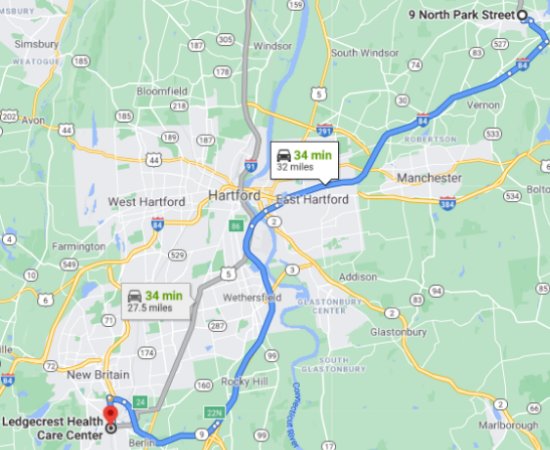

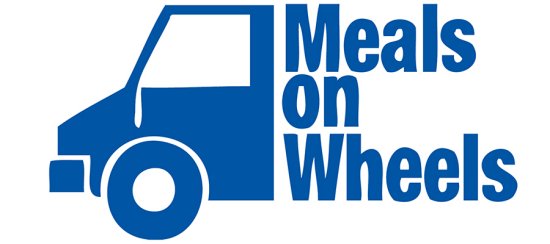
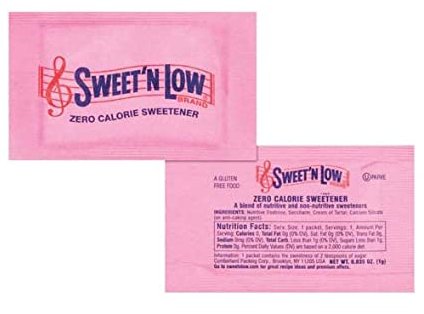

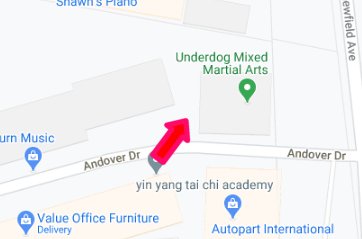
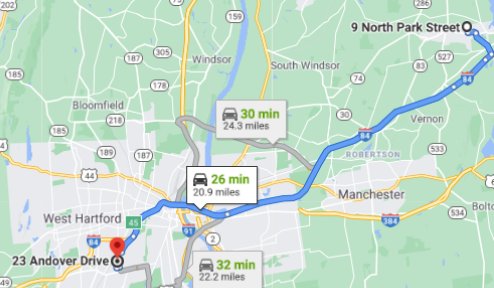

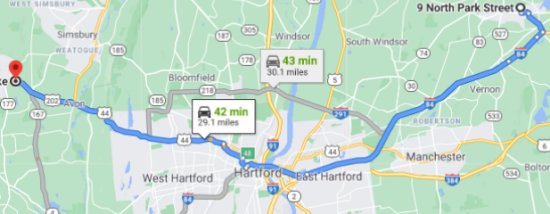
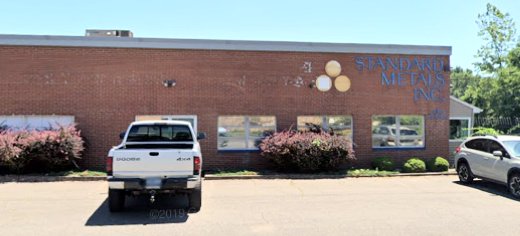
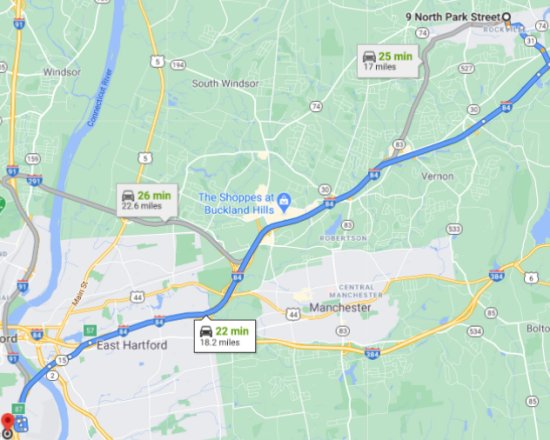

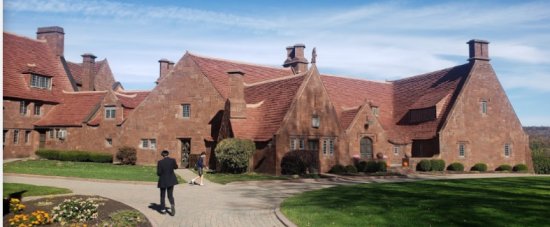
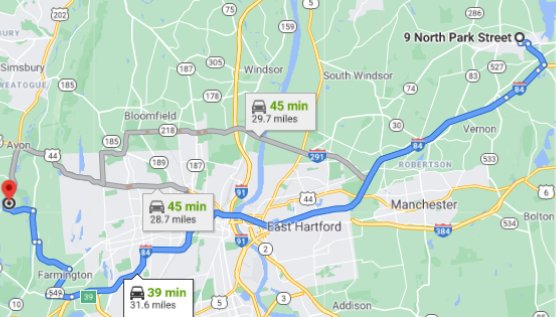

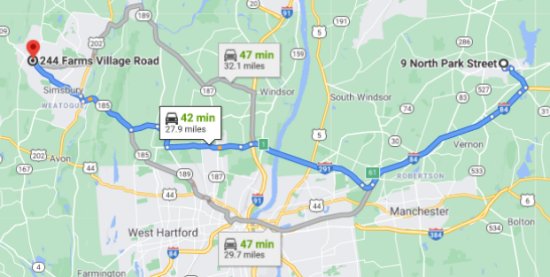
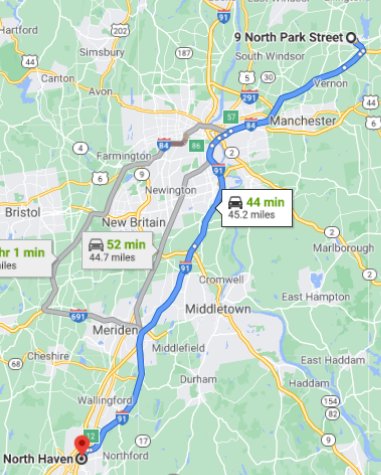
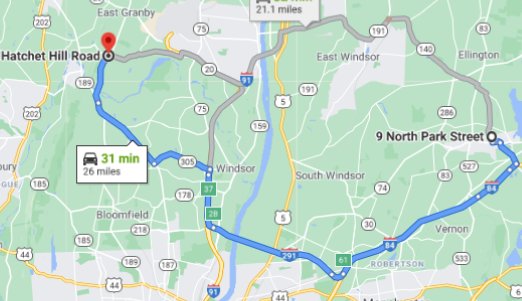

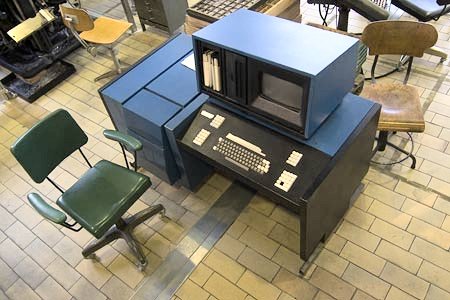

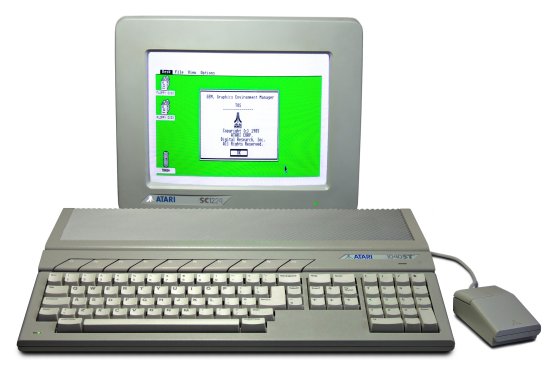
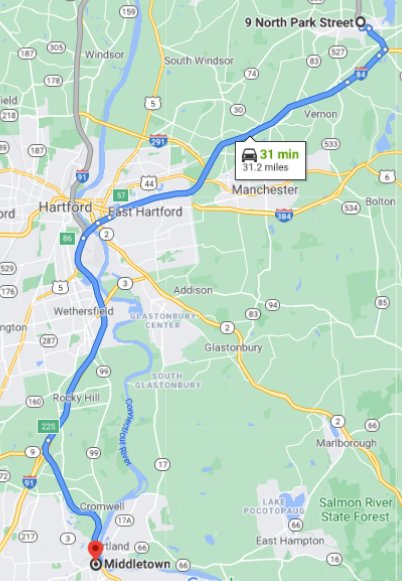

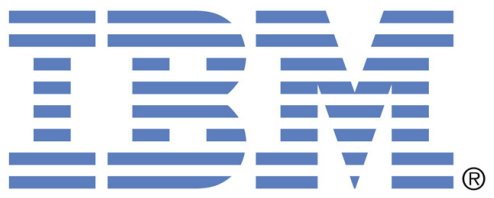
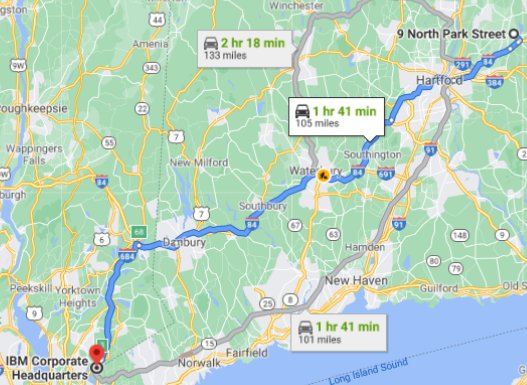
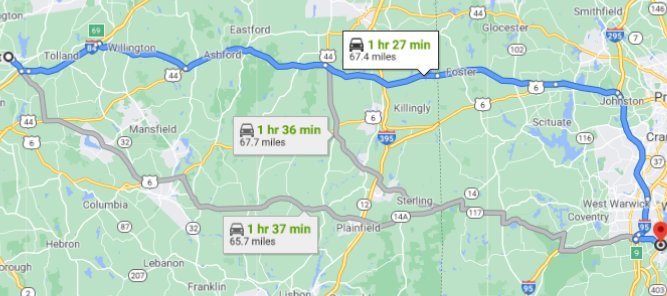
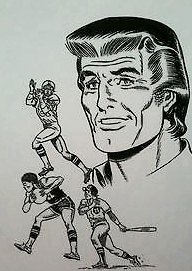
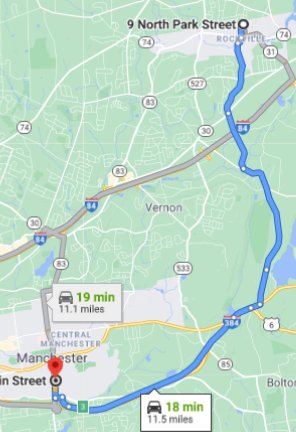
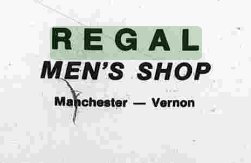
Pingback: 1981-1985 TSI: The Quest for the Grail | Wavablog
Pingback: 1981-1985 TSI: A4$1: The Beginnings | Wavablog
Pingback: 1981-1985 TSI: The Office and Employees | Wavablog